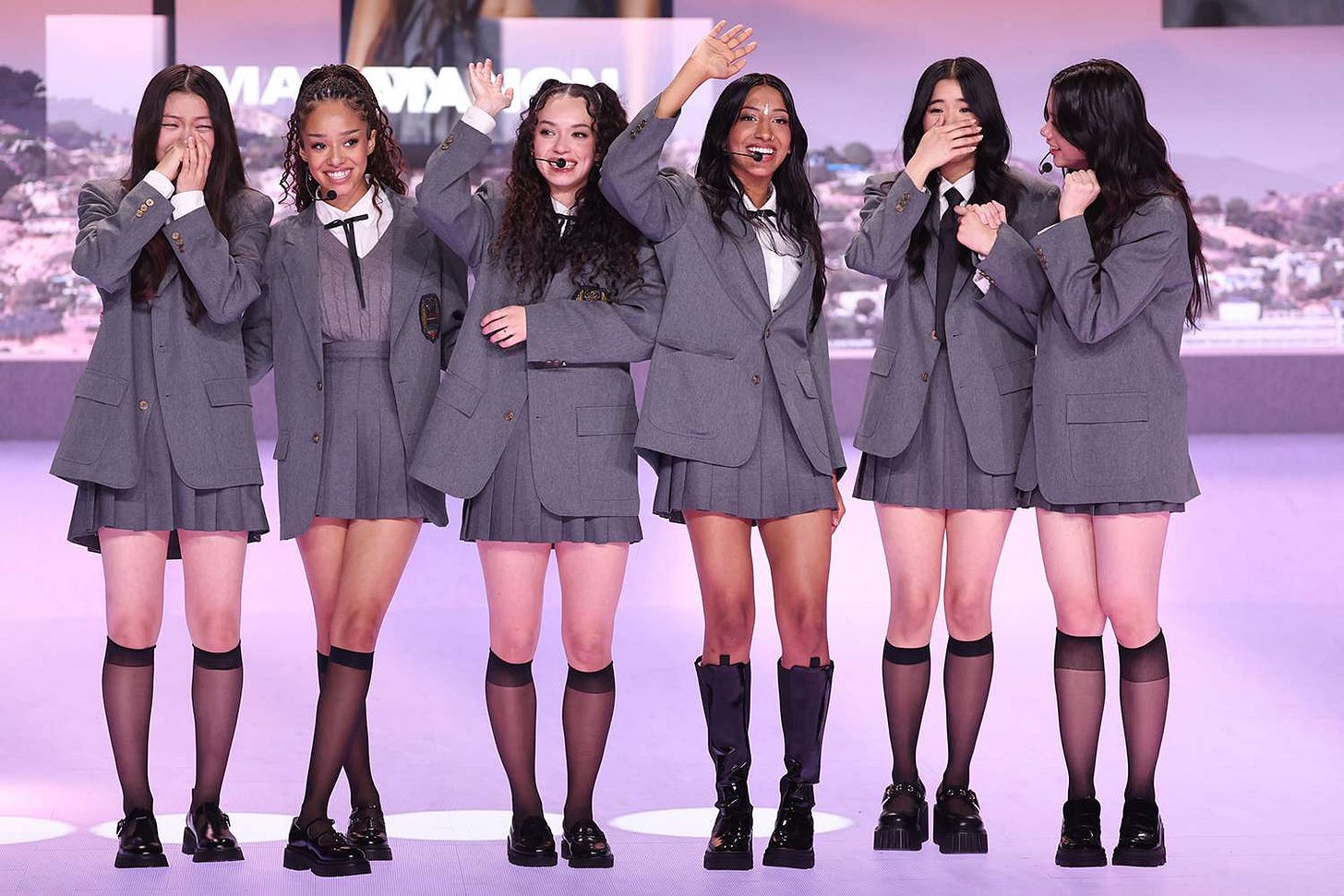Whose Dream Academy? Netflix's "Pop Star Academy" and Classical Ballet
Finding similarities in the K-Pop Trainee Program, the international internet sensation of Dream Academy, and Classical Ballet trainee programs.
Undeniably late to the game, I had only became truly aware of global pop girl-group KATSEYE due to their newest viral single “Gnarly.” But when my roommate put on Netflix’s documentary series Pop Star Academy: KATSEYE (2024), I was immediately glued to the screen. Pop Star Academy, relayed the behind the scenes of the online survival show The Debut: Dream Academy (2023). I realized very quickly that I couldn’t stop watching Pop Star Academy because, to me, Dream Academy was just a pop music version of the classical ballet academy and trainee programs.

The set up is alien to most viewers: a group of girls aged 14-21 living full-time in academy sponsored housing, and training all day and every day for the competition show’s “missions” (the dance/singing routines as assigned by the show’s producers). Girls under 18 get schooling, but it is maybe mentioned once is not the focus of the program. By the end of Pop Star Academy, six out of the more than twenty girls would be chosen to be HybexGeffen’s newest international girl group KATSEYE.
We as viewers get to view the instructors, the USA based dance instructor Nikki Paramo most visibly but also Geffen and Hybe executives, vocally criticize the trainees, often in front of each other. The girls lament to the camera of their long training hours, the intensity of the instructors, and the all-consuming nature of the program. But, of course, each girl in every interview assures us that she wouldn’t have it any other way, that this is the only way to get her dream. Cough cough, every ballerina ever. The ritualistic nature of suffering.
This structure was painfully familiar to me. Life-consuming training has become an essential expense of the classical ballet experience: the online/home-schooling, the full-time living, admittedly… the drama. Full-time trainee positions have become a popular tactic of many large scale USA ballet companies, selecting talented young dancers to dance and train full time, often in company housing, as trainees of the company. The difference between a trainee and a company member is that the trainee pays tuition. Ballet trainees, like Dream Academy, also participate in long days of training with no guarantee of a full-time paid position by the end of their time in the program. Both of these programs are multiple years long (about two years). Girls who were eliminated by the end of the program with no spot in KATSEYE and girls who finish a ballet trainee program with no job may both be thinking by the end, “after more than two years, what the heck do I do now?”
Then comes the injuries. Every day one of the Dream Academy trainees had broken or sprained something; they were overworked, exhausted, sick. One contestant Lexie gets hip surgery and immediately jumps back into rehearsal after only a couple of weeks for fears of getting behind. Contestant Samara dislocates her knee the day before the finale and is dancing on stage the next day. Trainee Sophia is applauded for completing her mission with a fever and stomach bug. The show tries to frame this as strength, perseverance, drive, but as an ex-ballerina, I see this as young bodies not being given the time to heal properly. Training is unfortunately their livelihood, rest is not. In a 2013 study by Sports Medicine Australia, researchers found that the risk of injuries for pre-professional ballet dancer’s risk for injury was at 76% (a higher risk than other adolescent athletes). Stress fractures and injuries from overworking are just the tip of the iceberg for young dancers who are experiencing dancing full-time for the first time.
Pop Star Academy was not safe from online criticism. The biggest being the blatant manipulation of the trainees by HxG executives. HxG confessed that when the girls applied to be in the trainee program, they were never informed nor did they consent to being in a public survival show. HxG president Mitra Darab directly confesses attempting to psychologically manipulate the girls and purposefully pitting them against each other for entertainment purposes.
After a brutal elimination, trainee Lexie leaves after deciding the toxic environment of the Dream Academy was too much for her. Though Lexie does receive an invitation to continue in the competition, her face says it all. Eerily stern, Lexie glances dirtily at the cameras and production crew—surrounded with the sobs and sniffles of her nearby eliminated friends.
I felt selfishly akin to Lexie. I remember the moment I quit ballet as a young pre-professional was after watching my friends hyperventilate and sob after being criticized by our ballet teachers one particularly brutal day. I saw her awakening moment as my own. The sudden realization: my dream is no longer worth it.
These two trainee programs should not be seen as 1:1, but their similarities are striking. Of course, the main purpose of these programs should be training their artists, but there are very clear holes in protections and care for their participants. And clearly, Dream Academy was plastered on the internet for all to see, so the trainees had the unique experience of being public on the internet. But with the popularity of ballet competitions presence on social media and the newfound need for ballet dancers to advertise themselves on social media, the creation of a classical ballet survival show is not completely out of the realm of reality. The ballet world can see Dream Academy as a mirror, a reality check; maybe programming like this is not how we train artists sustainably, safely, or joyfully.






